
Parents and educators have turned to this classic for more than three decades to help countless children become avid readers through awakening their imaginations and improving their language skills. This updated edition discusses the benefits, rewards, and importance of reading aloud to children of a new generation. Supported by the latest research and an updated library of book recommendations curated with an eye for diversity, the book offers proven techniques and strategies for helping children of all backgrounds and abilities discover the pleasures of reading and setting them on the road to becoming lifelong readers.
Jim Trelease’s Read-Aloud Handbook: Eighth Edition
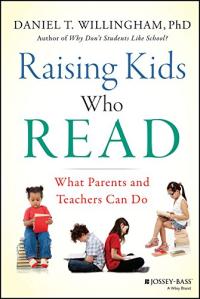
Neuropsychologist Willingham explains in depth the three key elements for reading enthusiasm ― decoding, comprehension, and motivation ― and provides practical tips for supporting all three from birth through adolescence. The book also includes Information on helping kids with dyslexia and encouraging reading in the digital age.
Raising Kids Who Read: What Parents and Teachers Can Do
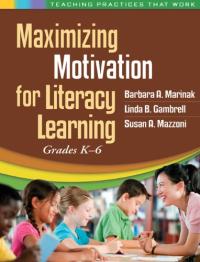
Discover a wealth of concrete ways to promote children’s intrinsic motivation to read. The book provides 30 practical strategies and activities, such as “Citizen of the Month,” “High Five,” and “Your Life in Books” that are ready to implement in the K-6 classroom. Teachers get step-by-step instructions for creating a motivating classroom environment, nurturing children’s self-concepts as literacy learners, and fostering appreciation of the value of reading and writing. More than a dozen reproducibles include two helpful assessment tools.
Maximizing Motivation for Literacy Learning: Grades K-6

A guide to welcoming children — from babies to teens — to a lifelong love of reading, written by the editors of The New York Times Book Review. Divided into four sections, from baby through teen, and each illustrated by a different artist, this book offers ideas on how to develop rituals around reading, build a family library, or engage a reluctant reader. Themed book recommendations are also included.
How to Raise a Reader

Grounded in the latest neuroscience and behavioral research, and drawing widely from literature, this book explains the cognitive and social-emotional benefits of reading aloud. For everyone, reading aloud engages the mind in complex narratives; for children, it’s an irreplaceable gift that builds vocabulary, fosters imagination, and kindles a lifelong appreciation of language, stories and pictures.
The Enchanted Hour: The Miraculous Power of Reading Aloud in the Age of Distraction

This book offers creative strategies, tips, and activities to help young people discover — or rediscover — the joy and empowerment of reading.
Raising Bookworms: Getting Kids Reading for Pleasure and Empowerment

Written from a strengths-based perspective, the author explores the theoretical underpinnings of reading, language, and literacy and provides detailed information on the wide range of reading inventories and standardized tests that may be used in a reading assessment. With a focus on how to craft professional evaluation reports that illuminate a student’s strengths ― not just weaknesses ― that enables school psychologists and diagnosticians, reading specialists, and special education professionals to conduct evaluations and develop effective interdisciplinary remedial recommendations and interventions.
Reading Assessment: Linking Language, Literacy, and Cognition

A decade ago, Wolf’s Proust and the Squid revealed what we know about how the brain learns to read and how reading changes the way we think and feel. Since then, the ways we process written language have changed dramatically. New research on the reading brain chronicles these changes in the brains of children and adults as they learn to read while immersed in a digitally dominated medium. Drawing on this research, this book looks at concerns around attention span, critical reasoning, and over-reliance on technology ― as well as hopes about what is happening to the reading brain as it changes to adapt to digital mediums.
Reader, Come Home: The Reading Brain in a Digital World
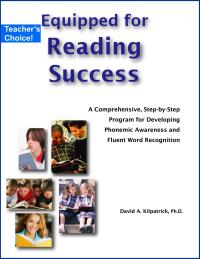
A comprehensive, step-by-step program for developing phonemic awareness and fluent word recognition.
Equipped for Reading Success
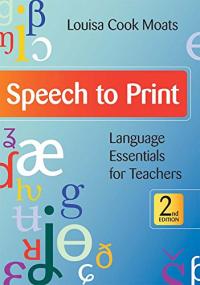
The new edition of this bestselling text helps elementary educators grasp the structure of written and spoken English, understand how children learn to read, and apply this foundational knowledge as they deliver explicit, high-quality literacy instruction. You’ll find expanded information on the critical elements of language, including orthography, morphology, phonetics, phonology, semantics, and syntax. See also: Speech to Print Workbook: Language Exercises for Teachers, Second Edition (opens in a new window).
Speech to Print: Language Essentials for Teachers, Second Edition
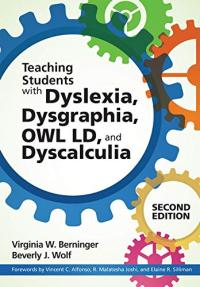
How can teachers provide effective instruction for students with learning disabilities while meeting the needs of all students? The second edition of this accessible text gives K–12 educators research-based answers. The book covers all four learning disabilities that require differentiated instruction — dysgraphia, dyslexia, dyscalculia, and oral and written language learning disability. It helps prepare educators to deliver explicit and engaging instruction customized to the needs of their students. Critical insights from diverse fields blend with lessons learned from actual teaching experience, making this both a preservice text and an in-service professional development tool.
Teaching Students with Dyslexia, Dysgraphia, OWL LD, and Dyscalculia
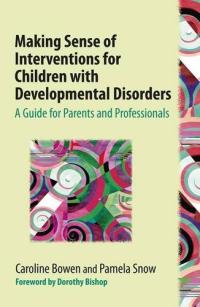
The authors discuss the non-evidence-based interventions that proliferate in the fields of children’s speech, language, literacy, attention, cognition, working memory, and behavior. They explore the science — or lack thereof — behind the interventions and suggest evidence-based alternatives that enjoy stronger scientific support. Written in lively, readable language, the book provides clear descriptions of each intervention and the populations to whom they are marketed; reasoned explanations of why the intervention should be approached with caution or rejected outright; and suggestions for interventions with proper scientific support, suitable for the children in question.
Making Sense of Interventions for Children with Developmental Disorders: A Guide for Parents and Professionals
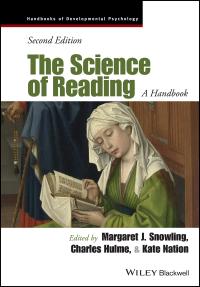
A multidisciplinary overview of contemporary knowledge about reading and related skills. The book provides comprehensive coverage of the subject, including theoretical approaches, reading processes, stage models of reading, cross-linguistic studies of reading, reading difficulties, the biology of reading, and reading instruction. Sections include: Word Recognition Processes in Reading; Learning to Read and Spell; Reading Comprehension; Reading in Different Languages; Disorders of Reading and Spelling; Biological Bases of Reading; and Teaching Reading.
The Science of Reading: A Handbook

The act of reading is so easily taken for granted that we forget what an astounding feat it is. How can a few black marks on white paper evoke an entire universe of meanings? It’s even more amazing when we consider that we read using a primate brain that evolved to serve an entirely different purpose. In this book, neuroscientist Stanislas Dehaene, author of How We Learn, explores every aspect of this human invention, from its origins to its neural underpinnings. A world authority on the subject, Dehaene reveals the hidden logic of spelling, describes pioneering research on how we process languages, and takes us into a new appreciation of the brain and its wondrous capacity to adapt.
Reading in the Brain: The New Science of How We Read

A practical, accessible, in-depth guide to reading assessment and intervention. It provides a detailed discussion of the nature and causes of reading difficulties, which will help develop the knowledge and confidence needed to accurately assess why a student is struggling. Readers will learn a framework for organizing testing results from current assessment batteries. Case studies illustrate each of the concepts covered. A thorough discussion is provided on the assessment of phonics skills, phonological awareness, word recognition, reading fluency, and reading comprehension.
Essentials of Assessing, Preventing, and Overcoming Reading Difficulties

Cognitive neuroscientist Seidenberg digs deep into the science of reading to reveal the ways human beings learn how to read and process language. He develops a careful argument, backed by decades of research, to show that the only responsible way to teach children to read well is to build up their abilities to connect reading with speech and then to amplify these connections through practice, developing skillful behavioral patterns hand in hand with the neurological networks that undergird them.
Language at the Speed of Sight: How We Read, Why So Many Can’t, and What Can Be Done About It
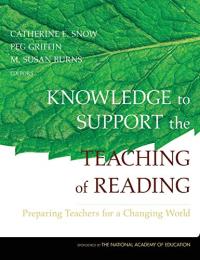
Basic reading proficiency is key to success in all content areas, but attending to students’ literacy development remains a challenge for many teachers, especially after the primary grades. This book presents recommendations for the essential knowledge about the development, acquisition, and teaching of language and literacy skills that teachers need to master and use.
Knowledge to Support the Teaching of Reading
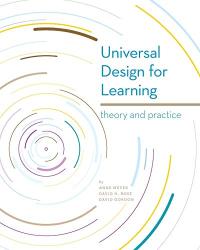
In the 1990s, Anne Meyer, David Rose, and their colleagues at CAST introduced universal design for learning (UDL), a framework to improve teaching and learning. This new look at UDL provides insights from research on learner differences, first-hand accounts and exemplars of how to implement UDL at all levels and across subjects using the UDL Guidelines, and opportunities to participate in a UDL community
Universal Design for Learning: Theory and Practice
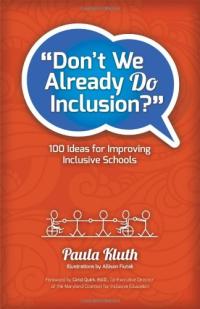
Are you trying to grow the inclusive schooling model in your community? Do you feel like you have tried everything to create change in your school? Do you want to sharpen the saw and become reenergized as an advocate or educator? The activities, examples, and illustrations in the book are designed to help participants refine their vision and their skills when it comes to inclusion. The ideas are free or low cost, and many can be achieved by any number of stakeholders including students and families.
Don’t We Already Do Inclusion?: 100 Ideas for Improving Inclusive Schools
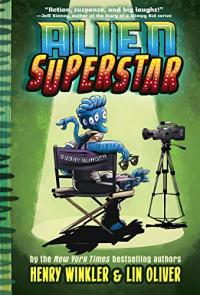
No one is shocked by the six-eyed alien strolling around the Universal backlot. The tourists just think he’s part of the show. It doesn’t take long for Buddy to land a role on a popular TV show, playing (of course) an alien. He becomes an overnight heartthrob and is suddenly faced with legions of adoring fans, rides in glamorous limos, and appearances at red carpet parties. But can Buddy maintain his secret identity while in the spotlight? Winkler and Oliver keep readers laughing while slipping in a lesson — accept everyone as they are, even if they have suction cups for feet.
Alien Superstar (Book #1)
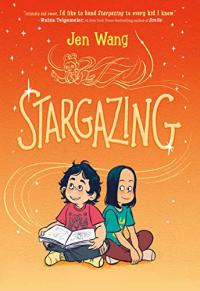
Can very different girls become best friends? Though both are Chinese-American, Moon and Christine are very different. Christine is cautious, serious, attends Chinese school, and follows rules. In spite of this, Christine and Moon become best friends. Christine wonders if she was a good enough friend when it is discovered that Moon’s celestial visions are caused by an all-too-real problem. Simple cartoon illustrations in full color are expressive and move this notable story to its gratifying conclusion. A note from the author/illustrator reveals the story’s genesis.
Stargazing

The life of Marguerite Johnson, better known as Maya Angelou, vividly comes to life in free verse and swirling images. Young Maya found solace in language, the rhythm of words during her difficult childhood in “the seesaw of the South,” and fast-paced St. Louis. She became a performer, a poet, and a highly respected novelist. A forward by her grandson encourages discussion as the book is shared. Photographs accompany a timeline of Maya’s life which concludes this sophisticated book.
Rise! From Caged Bird to Poetry of the People, Maya Angelou
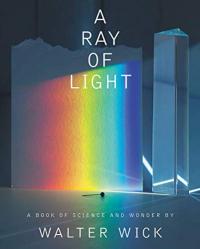
Matter can be liquid, sold, or gas that can have a role in its [light’s] creation. In large, luminous, light-filled photographs and understandable text, explore various aspects of light from incandescence to the color spectrum, iridescence, and more. Additional information about topics concludes this inspiring and informative overview to light.
A Ray of Light
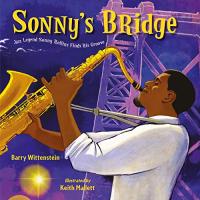
He was born in the jazz age so it’s not surprising that Walter Theodore “Sonny” Rollins loved jazz. He loved the saxophone and was a talented musician who became widely recognized. Free verse effectively explores Sonny’s life — including the hiatus he took from public performances, instead playing for himself on the Williamsburg Bridge. Jazzy illustrations enliven the handsome presentation.
